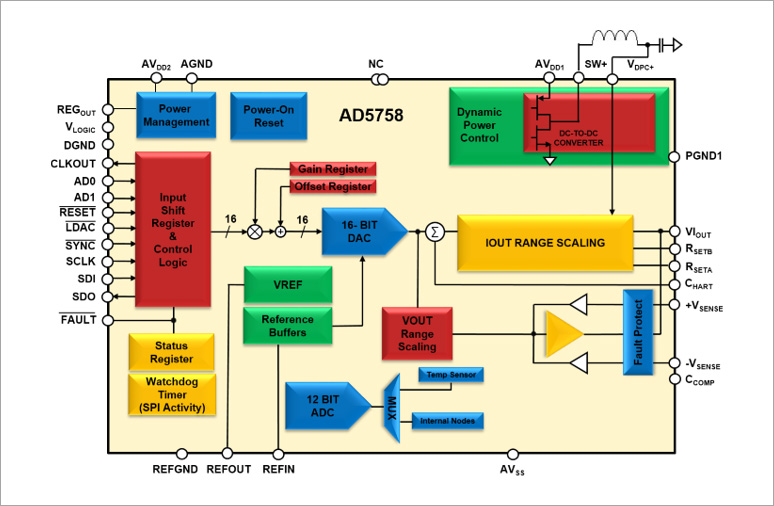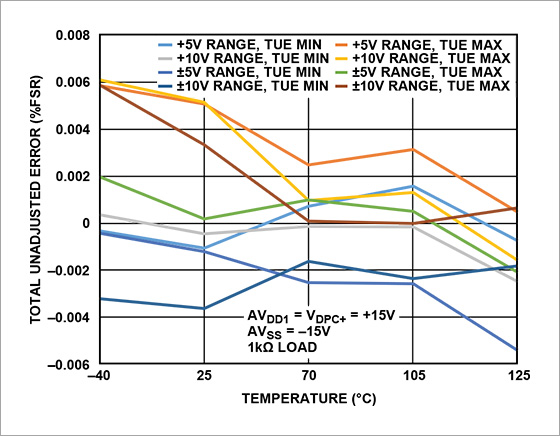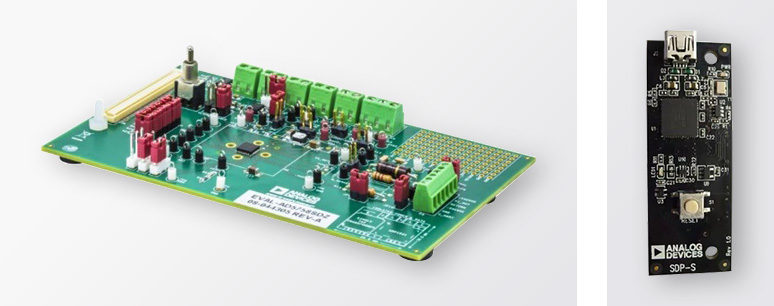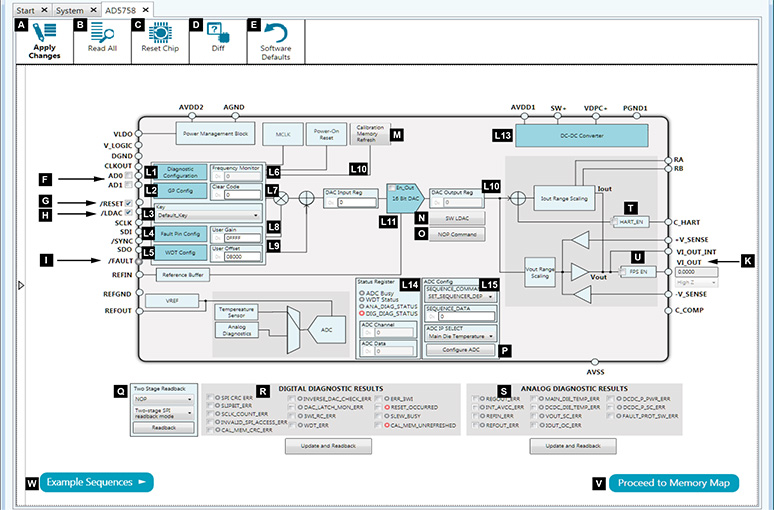What is the DPC function that solves the problem of heat generation in 4-20mA communication?
In this video, a comparative heat generation demo is performed on an actual board using the DAC "AD5758" with a DPC function (Dynamic Power Control) that can solve the heat generation problem that accompanies 4-20mA communication. If you are interested in the detailed functions after watching the video, please read this article to the end.
Features of the AD5758 High Density Analog Output Module
The AD5758 features Analog Devices Dynamic Power Control (DPC) which enables a high density analog output module that does not require power derating measures (no need to turn off channels due to heat generation).
- Best low power consumption with dynamic power control
- Diagnostics and robustness for system reliability
- TUE (Total Unadjusted Error): 0.05%, twice the accuracy of the industry standard
- Versatile output methods: voltage/current output (HART compliant)
Dynamic Power Control (DPC) function for low power consumption
The DC/DC control circuit built into the AD5758 internally monitors the output of the D/A converter and controls the regulator according to the power supply voltage. This function reduces power consumption to less than half that of conventional models.
The external components required for dynamic power control are a 47uH coil, 2.2uF and 4.7uF capacitors.
Diagnostics and robustness for system reliability
Equipped with output protection (FPC), CRC8 check, internal self-diagnosis, and internal temperature monitor, it contributes to improving system reliability and helps achieve functional safety.
In addition, it also has a built-in protection circuit against incorrect wiring, which prevents damage to the DAC even in the unlikely event of incorrect wiring.

TUE (Total Unadjusted Error): 0.05%, twice the accuracy of the industry standard
The AD5758's internal D/A converter has 16-bit resolution and a TUE (total unadjusted error) of only 0.05% of full scale. This will help improve your application specifications.
The AD5758 has an operating temperature range of −40°C to +115°C for industrial applications.

Versatile output methods: voltage/current output (HART compliant)
A single pin supports both current output and voltage output, contributing to circuit miniaturization.
- Current output range: 0 mA to 20 mA, 4 mA to 20 mA, 0 mA to 24 mA, ±20 mA, ±24 mA, −1 mA to +22 mA
- Voltage output ranges (including 20% overrange) 0 V to 5 V, 0 V to 10 V, ±5 V, and ±10 V
Additionally, the CHART pin allows coupling of the HART signal to the current output.
Analysis, Control and Evaluation (ACE) software-enabled evaluation board
An evaluation board is available for the AD5758 with an onboard 2.5 V ADR4525 reference.
The evaluation board can be connected to a PC's USB port via the EVAL-SDP-CS1Z board.

The Analysis, Control and Evaluation (ACE) software is a desktop software application that allows the evaluation and control of various evaluation systems within the Analog Devices product portfolio.
This application is composed of a common framework and plugins for each component.
ACE allows you to access the system at a level of abstraction that is easy to understand and to learn how the components function.

Application example
- process control
- actuator control
- Channel isolation analog output
- Programmable Logic Controller (PLC) and Distributed Control System (DCS) Applications
- HART network connection
Product Summary
- 16-bit resolution and monotonicity
- DPC for temperature control
- Single terminal available current/voltage output
- Current output range: 0 mA to 20 mA, 4 mA to 20 mA, 0 mA to 24 mA, ±20 mA, ±24 mA, −1 mA to +22 mA
- Voltage output ranges (including 20% overrange) 0 V to 5 V, 0 V to 10 V, ±5 V, and ±10 V
- User-Programmable Offset and Gain
- Advanced built-in diagnostics including 12-bit ADC
- Internal reference
- Robust architecture including output failure protection
- Temperature range: −40°C to +115°C
- 32-pin, 5 mm × 5 mm LFCSP package
Click here for recommended articles/materials
Click here to purchase products
Click here for manufacturer site/other related links
Inquiry
If you have any questions regarding this article, please contact us below.
Analog Devices Manufacturer Information Top
If you want to go back to Analog Devices Manufacturer Information Top, please click below.
